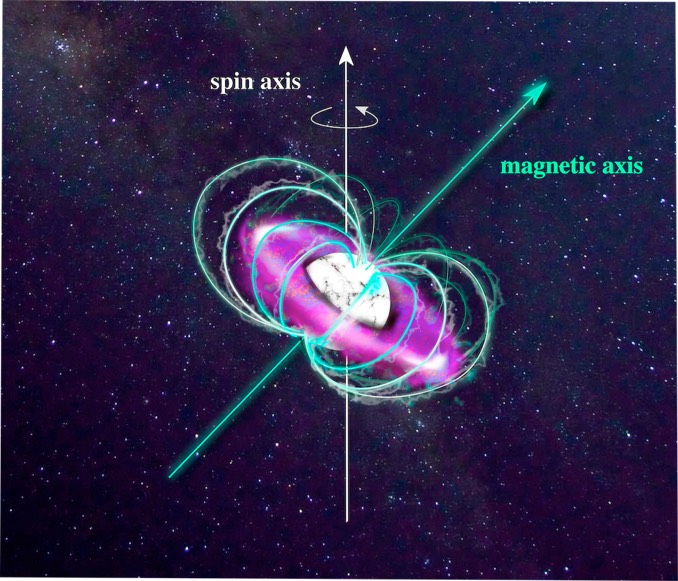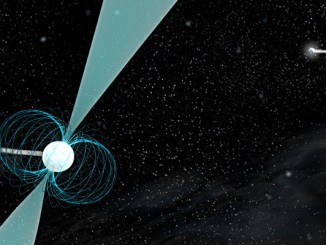
Here’s the mystery: some why dwarf stars, compact suns at the end of their lives, show signs of highly ionised metals in their spectra, requiring far higher temperatures than a typical white dwarf generates as it slowly cools over billions of years.
Here’s the solution: the magnetic field generated by a white dwarf can trap material flowing away from the surface, shocking it to the extreme temperatures needed to strip away electrons and produce the tell-tale signs of ionisation in heavier elements.
A team led by Nicole Reindl, a Research Fellow of the Royal Commission 1851 based at the University of Leicester, reached that conclusion after studying a white dwarf 1,200 light years away known as GALEXJ014636.8+323615. A detailed analysis of its spectra showed signs of highly ionised metals that varied over a period of about six hours, the time it takes for the white dwarf to complete one rotation.
“It’s like a doughnut made up of ultra-hot material that surrounds the already very hot star” said Reindl. “The axis of the magnetic field of the white dwarf is tilted from its rotational axis. This means that the amount of shock-heated material we see varies as the star rotates.
“After decades of finding more and more of these obscure stars without having a clue where these highly ionised metals come from, our shock-heated magnetosphere model finally explains their origin.”
The team’s observation is the first of a magnetosphere around a white dwarf.
“We simply didn’t take this into account,” said Reindl. “Ignoring their magnetospheres could mean measurements of other basic properties of white dwarfs are wrong, like their temperatures and masses.”
Reindl’s team concludes up to a quarter of all white dwarfs may go through stages in which their magnetospheres trap and super-heat material from those stars.



